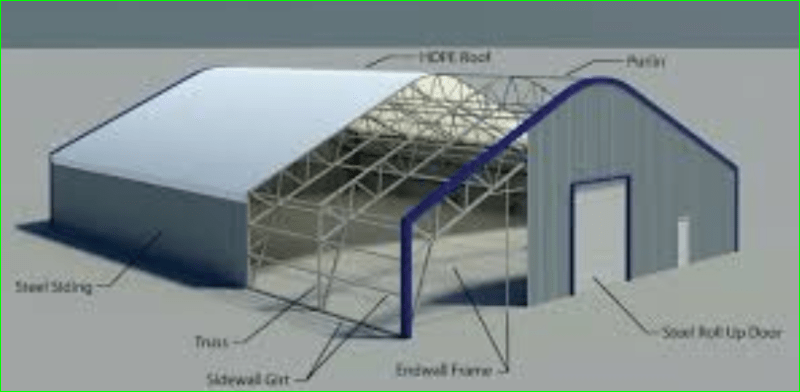Hi,
I have approached a problem regarding the deflection of the structure clad with tension fabric.
We have a team of new engineers who are quite conservative, which results in very heavy structures.
After my investigation, I have realised that it is mainly driven by SLS - deflection. Structural members are at 50-60% utilisation ratio.
Our structures have pinned bases and are made of a lattice steel frame. On many occasions do not have gable ends or have only one gable end.
According to the BS, there is not design limitation for deflection, and it will vary according to the project, client requirements and cladding type.
As we use tension fabric which is very flexible, I believe the deflection limits are no applicable, and our new engineers use L/150 - L/200 - I believe it is a bit excessive.
Can you please advise what deflection limits would you recommend to consider? Or to not consider the deflection limits at all? (if the client does not have any requirements and deflection of the structure will not collide with other buildings etc).
Thanks!
I have approached a problem regarding the deflection of the structure clad with tension fabric.
We have a team of new engineers who are quite conservative, which results in very heavy structures.
After my investigation, I have realised that it is mainly driven by SLS - deflection. Structural members are at 50-60% utilisation ratio.
Our structures have pinned bases and are made of a lattice steel frame. On many occasions do not have gable ends or have only one gable end.
According to the BS, there is not design limitation for deflection, and it will vary according to the project, client requirements and cladding type.
As we use tension fabric which is very flexible, I believe the deflection limits are no applicable, and our new engineers use L/150 - L/200 - I believe it is a bit excessive.
Can you please advise what deflection limits would you recommend to consider? Or to not consider the deflection limits at all? (if the client does not have any requirements and deflection of the structure will not collide with other buildings etc).
Thanks!

